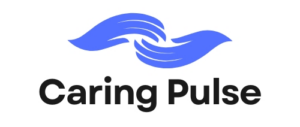Introduction
Carer’s Allowance is a lifeline for many low-income caregivers providing essential support to incapacitated individuals. It serves as a means-tested payment, designed to offer financial assistance to those dedicating their time and energy to care for others who are unable to look after themselves due to age, disability, or illness. Understanding the intricacies of the carers allowance rate can be crucial in ensuring that caregivers receive the support they are entitled to.
This article aims to delve into the various facets of Carer’s Allowance. Readers will find detailed coverage on:
- The criteria that determine eligibility for Carer’s Allowance.
- The different rates of payments and what factors influence these amounts.
- An analysis of recent legislative changes and how they affect carers.
- Interaction of Carer’s Allowance with other social welfare payments.
- Taxation and pension considerations for recipients of Carer’s Allowance.
Additionally, the process for applying and managing claims will be outlined, offering a comprehensive guide for those navigating this aspect of social welfare. For caregivers seeking more information on care options or personalized care solutions, Caring Pulse, a platform catering specifically to professional elderly care providers in the UK, provides resources and support tailored to their needs.
Understanding Eligibility for Carer’s Allowance
Eligibility for Carer’s Allowance depends on a detailed means test designed to assess an applicant’s financial resources. This test looks closely at two main sources of income: cash income and capital income, but it doesn’t include the value of the main home in the calculation.
Income Thresholds & Means Test
The means test for Carer’s Allowance includes:
- Cash Income: This includes wages, pensions, social welfare payments, and other direct forms of income.
- Capital Income: Savings, investments, and property (except the main home) are taken into account here. The amount generated from these assets is converted into a hypothetical weekly income that is then considered in the means test.
To pass the means test, an applicant’s total income must be below specific thresholds that vary based on their situation.
Definition of a ‘Carer’
A carer is someone who gives full-time care and attention to a person in need of such support because of their age, disability, or illness. The care provided should be significant and not just additional support.
Type of Care Provided
Requirements for the care include:
- The care must be full-time and provided at home to ensure that the person being cared for gets enough attention.
- The caregiver cannot have a job or be self-employed outside the home for more than 18.5 hours per week.
For individuals thinking about applying for Carer’s Allowance, it is important to carefully record both the nature of the caregiving role and financial situation, as these are crucial in determining eligibility. Potential applicants should prepare detailed records describing not only their income but also the comprehensive care they give.
Understanding these eligibility criteria is essential for caregivers to navigate through the complexities of social welfare benefits and increase their chances of getting financial assistance through Carer’s Allowance.
Exploring Different Rates of Carer’s Allowance
The financial support provided through Carer’s Allowance can vary significantly based on the individual circumstances of each carer. Understanding the different payment levels is crucial for caregivers to ascertain what they might be entitled to receive. Below is a detailed overview of these rates:
Full-rate Allowance
Carers who meet the eligibility criteria and are not receiving certain other social welfare payments typically qualify for the full-rate Carer’s Allowance. As of the current standards, this amount is £76.75 per week. This rate applies to those providing full-time care and attention to individuals who require it due to age, disability, or illness.
Half-rate Allowance
In situations where a carer is entitled to another social welfare payment, or their spouse or partner receives an increase for a qualified adult on their own social welfare payment, they may still be eligible for a half-rate Carer’s Allowance. This ensures that providing care does not hinder their financial support from other necessary benefits.
Personal Rate for the Caregiver
Carers receive a personal rate as part of their Carer’s Allowance. This is the standard rate paid directly to the carer based on their means test, taking into account any income and capital they have, with certain disregards applied as per recent legislative updates.
Additional Amounts for Child Dependents
Caregivers with child dependents may also be eligible for increased payments to help cover the extra costs associated with caring for children. These additional amounts are intended to ease the financial burden on carers responsible not only for adults in need but also for minors under their care.
Qualified Adult Payments
When caring for an adult who is recognized as a qualified adult—such as a spouse, civil partner, or cohabitant—carers may receive increased payments on top of their personal rate. The amount depends on the means test and any earnings or pensions that the qualified adult may have in their own right.
The variation in payment levels reflects an understanding that caregiving situations are unique and diverse. The structure aims to provide tailored financial support that aligns with each caregiver’s specific circumstances and responsibilities.
By recognizing different family configurations and caregiving dynamics, Carer’s Allowance strives to administer aid that best suits each scenario—from solo carers supporting an individual to those managing the needs of multiple dependents or caring alongside a partner.
For precise information regarding how these rates apply to individual cases and what may constitute as a qualified adult or child dependent, carers should refer to official government sources or seek assistance from local advisory services.
Recent Changes to Carer’s Allowance: An In-Depth Analysis
Budget 2024 introduced important changes to Carer’s Allowance, specifically regarding income thresholds. These changes are crucial for many carers as they determine the financial support available to assist them in their caregiving roles. In this article, we will take a closer look at these recent modifications and their implications.
Income Disregard Increases
One of the most significant amendments is the increase in income disregard. Income disregard refers to the portion of a carer’s income that is not taken into account when assessing eligibility for Carer’s Allowance. Here’s how it affects different groups:
For Single Individuals
- The income disregard has risen to €450.
- This means that single carers can earn up to this amount weekly without it affecting their qualification for full or partial Carer’s Allowance.
For Couples
- The threshold is now set at €900.
- This acknowledges the potential for dual incomes in a household and provides greater leeway for carers cohabiting with a partner.
Impact on Carers
These modifications aim to reflect the contemporary cost of living and recognize the essential contribution that carers make. The changes ensure that more carers can either become eligible or receive a higher rate of allowance than before. Here are a few examples:
- A single carer earning €400 per week who previously may have had limited access to Carer’s Allowance could now qualify for full or partial benefits under the new rules.
- Similarly, a couple where each partner earns €400 per week could see an increase in their Carer’s Allowance due to the combined earnings being within the new disregard limit.
By adjusting income thresholds, Budget 2024 attempts to strike a balance between supporting carers financially while not disincentivizing paid employment, which can be an important aspect of life for many carers.
Looking Ahead
With these changes, it becomes increasingly important for current and prospective carers to reassess their financial situation and determine how they may benefit under the revised rules. The updates aim not only to provide immediate financial relief but also to accommodate varying financial situations among caregivers, ensuring they are not unduly penalized for maintaining some degree of income alongside their caring duties.
Considering Other Social Welfare Payments Alongside Carer’s Allowance
When assessing Carer’s Allowance eligibility and the amount one might receive, it is critical to understand the interaction with other social welfare payments. Individuals may be entitled to various benefits, and receiving one can influence entitlement to another.
Impact on Eligibility
Interaction With Other Payments
Being in receipt of another qualifying social welfare payment could affect one’s eligibility for Carer’s Allowance. The rules are intricate, often requiring specific conditions to be met for concurrent eligibility.
Means Test Considerations
The means test for Carer’s Allowance takes into account most types of income. However, certain social welfare payments may be fully or partially disregarded during this process.
Effect on Payment Rates
Concurrent Payment Adjustments
If eligible for both Carer’s Allowance and another social welfare payment, adjustments may be made. In some cases, a person could receive a reduced rate or even a half-rate Carer’s Allowance.
Dependent Additions
Additional amounts for dependents under another qualifying social welfare payment may alter the rate of Carer’s Allowance.
Examples of Interactions
- A carer receiving State Pension (Contributory) might still qualify for half-rate Carer’s Allowance without affecting their pension.
- Unemployment benefits could conflict with the stipulation that a carer cannot be engaged in employment or training over 18.5 hours per week.
Carers should meticulously review their current and potential benefits to ensure they are receiving the appropriate level of support. Seeking advice from local Intreo centres or Citizens Information Centres is advisable to navigate these complexities.
It is essential for carers to remain informed about how their financial landscape shifts with changes in their care responsibilities or receipt of other benefits. Proper understanding and management of these dynamics can provide a more stable financial foundation for both carers and their dependents.
The Role of Carer’s Allowance in the Overall Financial Landscape: Taxation and Pension Implications
Carers who receive Carer’s Allowance must consider the implications on their overall financial landscape, particularly concerning taxation and State Pension (Contributory) entitlements. While Carer’s Allowance provides vital support for carers, navigating the tax system and understanding its impact on future pension rights is crucial.
Taxation of Carer’s Allowance
Carer’s Allowance, like some other social welfare payments, is considered taxable income by revenue authorities. However, not all carers will actually pay tax on it:
- Carers whose total income is below the personal tax allowance threshold may not be liable to pay income tax.
- If the Carer’s Allowance is a carer’s sole or main source of income, they are unlikely to exceed the tax-free allowance.
- Tax liability also depends on additional incomes such as pensions, investments, or earnings from employment.
It’s important for carers to declare their Carer’s Allowance as part of their total annual income. For those with multiple sources of income that collectively exceed the personal allowance, seeking advice from a tax professional can help to ensure that they are paying the correct amount of tax.
State Pension (Contributory) Entitlements
Concerning retirement benefits, receiving Carer’s Allowance can have both direct and indirect effects:
- The good news is that Carer’s Allowance does not affect one’s entitlement to receive the State Pension (Contributory); these benefits are independent of each other.
- Additionally, carers may be credited with Class S Social Insurance contributions while they receive Carer’s Allowance. These ‘credited contributions’ help maintain a person’s record for future pension entitlements.
For carers planning for retirement, being aware of these credits can make a significant difference in qualifying for a full State Pension upon reaching retirement age. It ensures that periods spent caregiving do not create gaps in their insurance record.
Carers should note that while Carer’s Allowance itself does not affect the State Pension (Contributory), any additional incomes or pensions received could influence the means-tested portion of State Pension (Non-Contributory), if applicable.
? Tip: It is advisable for individuals receiving Carer’s Allowance to stay informed about their current financial situation and future implications. Regular reviews with financial advisors or contacting social welfare offices can provide guidance tailored to an individual’s circumstances. This proactive approach helps manage immediate financial needs while safeguarding long-term security through retirement planning.
Applying for and Managing Carer’s Allowance Claims
Applying for Carer’s Allowance is an important step for caregivers to access financial support. The application process may seem overwhelming, but with the right information and guidance, it can be a straightforward process. Here is a step-by-step guide to help you navigate through the application process:
- Check caregiver qualifications: Before applying for Carer’s Allowance, ensure that you meet the eligibility criteria. You must:
- Be at least 18 years old
- Pass a means test
- Provide full-time care outside of a hospital or institution
- Not be employed or volunteering more than 18.5 hours per week
- Be a habitual resident
- It’s crucial to review these qualifications to determine if you meet the requirements.
- Gather necessary documents: To complete your application, you will need specific documents and information. Prepare the following:
- PPS number (Personal Public Service Number)
- Bank account details
- Proof of identity (e.g., passport or driver’s license)
- Proof of address (e.g., utility bills or rental agreement)
- Medical confirmation form completed by the person you care for
- Access the application form: You can obtain the application form (CR1) from your local Intreo Centre or Citizens Information Centre. These centers are government offices that provide assistance and support regarding social welfare services. You can also download the form online from official government websites.
- Complete the application form: Take your time to fill out the form accurately and provide all necessary details. Make sure to include any relevant information about your caregiving situation, financial circumstances, and personal details as required.
- Submit your application: Once you have completed the form, submit it along with any supporting documents to your local Intreo Centre or Citizens Information Centre. Keep copies of all documents submitted for your records.
- Follow up on your application: After submitting your application, you may need to wait for a decision. The processing time can vary, but you can contact the relevant office to check on the status of your application if needed. Be prepared to provide any additional information or documentation that may be requested.
- Manage your Carer’s Allowance claim: If your application is successful and you are granted Carer’s Allowance, it is essential to understand your responsibilities as a recipient. Keep track of any changes in your caregiving circumstances or financial situation, as these may affect your entitlement to the allowance. Report any changes promptly to the relevant authorities to ensure accurate and timely payments.
Remember, if you need assistance at any stage of the application process, don’t hesitate to reach out to your local Intreo Centre or Citizens Information Centre. They can provide guidance and answer any questions you may have about applying for and managing Carer’s Allowance claims.
By following these steps and staying informed, you can navigate the application process smoothly and access the financial support you need as a caregiver.
Exploring Additional Support Options for Carers
Being a caregiver can be a demanding role, and carers often find themselves in need of respite or additional support. Fortunately, there are options available to help carers in these situations. Two such options are care homes and care agencies.
Care Homes
Care homes provide a residential setting where individuals can receive round-the-clock care and support. This can be an ideal option for carers who need a temporary break or for those whose loved ones require more specialized care than can be provided at home. Care homes offer a range of services, including assistance with daily activities, access to medical professionals, and social interaction with other residents.
Care Agencies
Care agencies are organizations that provide professional caregivers who can offer support and assistance in the comfort of the individual’s own home. These caregivers can help with tasks such as personal care, meal preparation, medication management, and companionship. Engaging a care agency allows carers to take time off while ensuring their loved ones receive the care they need.
For personalized help in finding a suitable care home or care agency, readers can contact the website owner or utilize specific resources designed to assist carers in their search.
Remember, it’s essential for carers to prioritize their own well-being and seek support when needed. Exploring these additional support options can provide much-needed respite and ensure that both carers and their loved ones receive the quality care they deserve.
Conclusion
Carers play a crucial role in society by providing essential support to individuals in need. Carer’s Allowance is a valuable financial resource that can help ease some of the financial burdens that carers face. However, it’s important for carers to also look into other options and support services to make sure they and their loved ones are well taken care of.
Here are the key points to remember:
- Carer’s Allowance provides a weekly payment to eligible carers, contributing to their overall financial stability.
- Explore other options: Consider care homes or engaging care agencies for respite or additional support.
- Balance is key: Strive for a balance between financial assistance and quality care provision.
- Seek support: Don’t hesitate to reach out for help when needed, whether it’s through Carer’s Allowance or other resources like care homes and agencies.
- Take care of yourself: Remember that self-care is just as important as caring for others.
By understanding these points and taking action accordingly, carers can enhance their caregiving experience while maintaining their own well-being.
“Taking care of myself doesn’t mean ‘me first.’ It means ‘me too.'” – L.R. Knost
FAQs (Frequently Asked Questions)
What is Carer’s Allowance and why is it important?
Carer’s Allowance is a means-tested payment designed to support low-income caregivers who provide regular care for incapacitated individuals. It is important in providing financial assistance to carers, helping them to continue their caregiving role without facing significant financial hardship.
What are the key eligibility criteria for Carer’s Allowance?
The eligibility for Carer’s Allowance involves an income threshold and means test, where applicants need to meet specific requirements related to their cash and capital income. Additionally, individuals must meet the definition of a ‘carer’ and provide the type of care specified by the program.
What are the different rates of Carer’s Allowance available?
Carer’s Allowance offers varying payment levels, including full-rate allowance, half-rate allowance, personal rate, additional payments for child dependents, and qualified adult payments, depending on the caregiver’s situation.
How has Budget 2024 impacted Carer’s Allowance?
Budget 2024 has brought about changes to Carer’s Allowance, particularly focusing on income disregard and alterations to income thresholds for single individuals and couples. These changes have implications for the amount of financial support carers may receive.
How does receiving other social welfare payments affect Carer’s Allowance?
The receipt of other qualifying social welfare payments can impact the eligibility and amount of Carer’s Allowance awarded. It is important for carers to understand how these benefits interact to ensure they receive the appropriate level of support.
What are the taxation and pension implications of receiving Carer’s Allowance?
Receiving Carer’s Allowance may result in potential tax liabilities for carers. Additionally, it can have an impact on their entitlements to State Pension (Contributory). It is essential for carers to be aware of these implications when considering their overall financial situation.
How can one apply for and manage Carer’s Allowance claims?
Applying for Carer’s Allowance involves meeting specific caregiver qualifications and going through the application process using form CR1. This can be done through local Intreo Centre or Citizens Information Centre. It is important for carers to seek assistance if needed throughout this process.
What additional support options are available for carers?
Carers may consider exploring care homes or engaging care agencies to provide respite or additional support when needed. They can find a care home or care agency through specific resources or by seeking personalized help from relevant organizations or service providers.
What resources and services should carers explore for their well-being?
Carers are encouraged to explore all available resources and support services, including Carer’s Allowance, care homes, and care agencies, to ensure their well-being and that of their loved ones. Striking a balance between financial assistance and quality care provision is paramount for their overall well-being.




